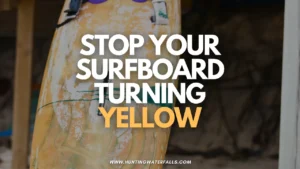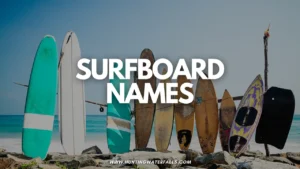Skimboarding is a lot of fun but it can be difficult to learn and master. However, there are a variety of hacks that the pro skimboarders are aware for that make skimming easier and even safer.
In this article we will look at some cool skimboarding hacks to take your skimboarding to the next level.
With some practice you can learn some of the best skimboarding hacks and tips to make you better and take your skimming to the next level.
We will explore how to jump onto your board properly so you maintain maximum speed and we will explain why skimboarders kick sand as well as some super cool hacks on performing tricks like ollies and pop-shuvits.
1. Choose The Right Board
While it's one of the simplest and most obvious hacks getting the right board makes a WORLD of difference when it comes to how well you can skimboard.
The first and most important thing to know is foam skimboards are A LOT better than wooden skimboards…and I mean by a HUGE MARGIN!
Below you can see Austin Keen (who is one of the best skimboarders in the world) try to skimboard waves on a wooden skimboard. It's really hard to do and nearly impossible given wooden skimboard's small size, heavy weight and flexibility.
If your budget allows getting a foam board with a fiberglass, epoxy or carbon fiber exterior are going to perform a lot better than wooden boards and be a lot easier to learn on.
I personally made the mistake of learning on a wooden skimboard and it made life extremely difficult. Wooden skimboards don't float well and overall they are just difficult to use.
Choosing the correct board for your size and weight can be tricky even for experienced skimboarders.
The best rule of thumb is to always go for a bigger board than a smaller board as it will float you better and allow you to skim farther and get onto waves easier.
Remember cheaper is not always best. A good fiberglass board will be easier to ride and skim further than a cheap wooden board.
If you need help choosing a board to start out on check out our complete guide to the best skimbaords for beginners. Or if you're buying a skimboard for a child look at our list of the best skimboards for kids.
2. Start On The Carpet or Wet Grass
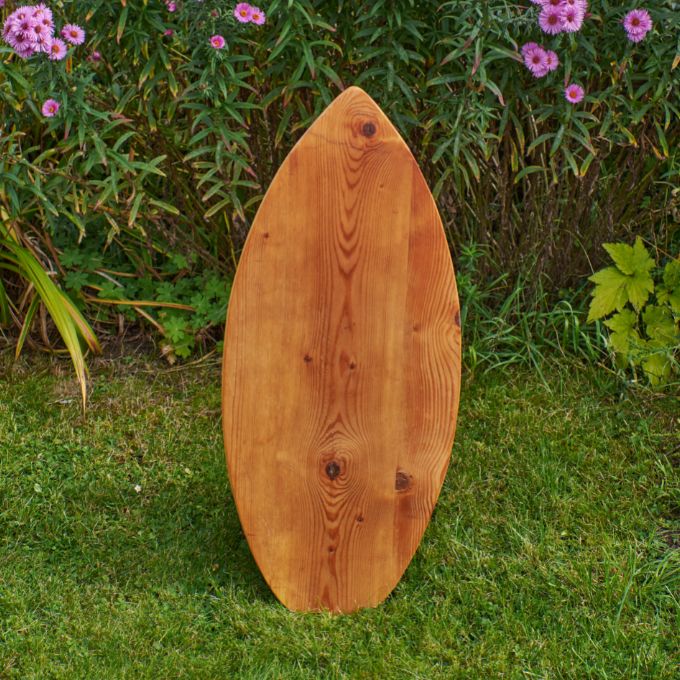
The beach or the local lake is the ideal place to begin practicing skimboarding but sometimes the weather, the swell or your location doesn't permit it.
Getting good at skimboarding takes A LOT of practice and if you're only practicing at the beach once a week or so it'll take a long time to get good.
Believe it or not but you can practice a lot of the basics at home on the carpet or in your backyard on wet grass. You can learn to skimboard almost anywhere. Start getting the hang of your new board by stepping on it on the carpet at home.
Primarily you want to focus on perfecting getting onto the board using the one step drop. The full guide to this method can be found in the complete beginners guide to learning how to skimboard.
This practice on carpet will allow you to get the hang of where to place your feet properly for balance. You can start really slow and controlled and build up speed. You can even practice simple tricks like shuv its at home.
Below you can see professional skimboarder Austin Keen having a ball skimboarding in his loungeroom during quarantine.
3. Bend Your Knees
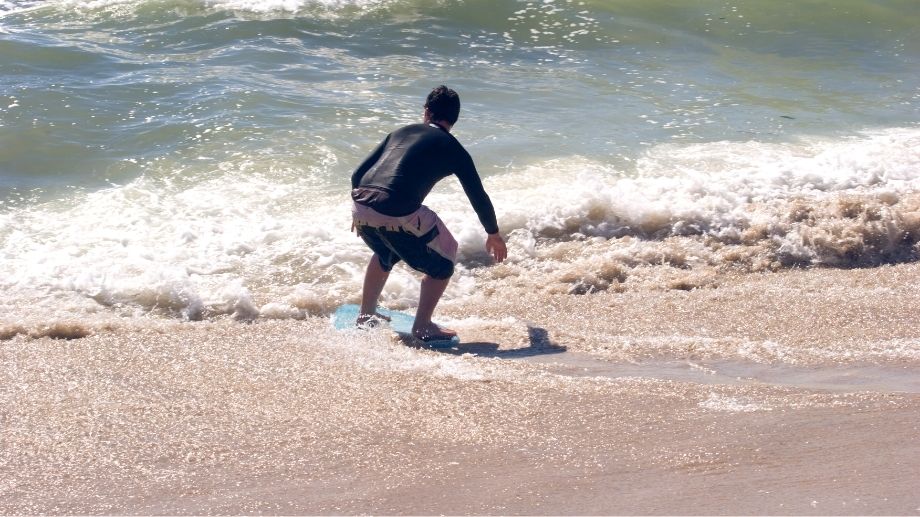
One of the biggest mistakes people make when learning how to skimboard is they stand completely upright when they land on their board.
At best, this can lead to loss of momentum or at worst it can lead to some pretty bad falls.
Lean forward and bend your knees to get an even balance on your skimboard.
Your feet should be in the center of the board with your back foot at the rear of the board.
4. Make a Balance Board
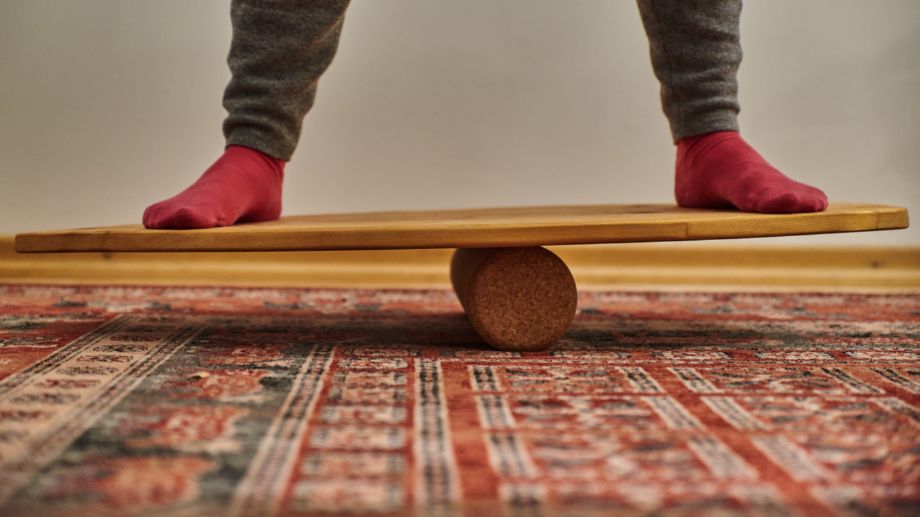
Put a round stick or even a rolled up towel under your board at home to turn it into a balance board.
Use this to safely practice your balance at home.
Just be careful what you use under your board, if it's too hard it may damage your board.
For this I like to use a cheap wooden skimboard as they are pretty hard wearing and I don't care as much if the bottom gets wrecked.
Otherwise use a soft roller under your board that won't scratch it up.
5. Choose The Ideal Spot
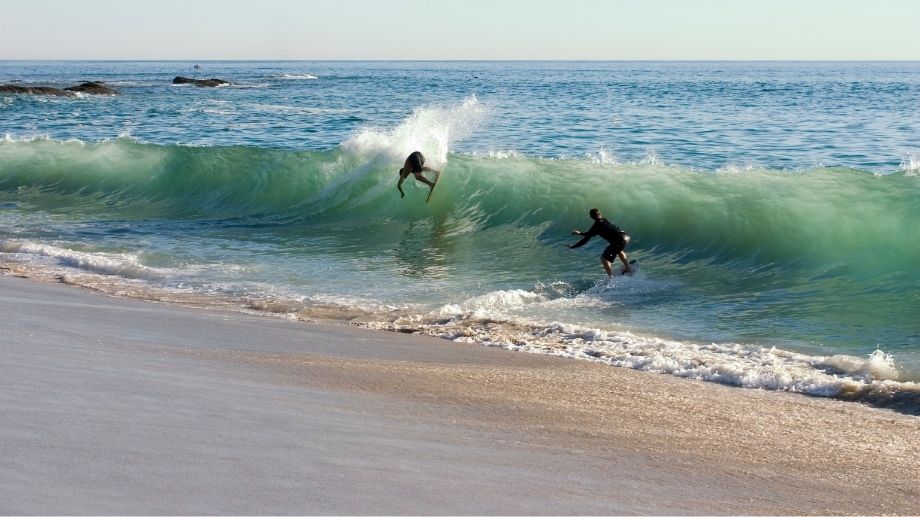
For beginners, ideally you want to find a smooth calm spot for skimboarding.
Look for some wet sand or some thin flat water about 1cm or half an inch deep.
The calmer the conditions the better. A spot with no crowds on the beach is best.
If you're more experienced then you'll want to find a beach that slants downwards so you can use gravity to your advantage and you'll also want some big and well timed shore dump waves.
6. Throw Sand On The Bottom Of Your Board
Have you ever seen skimboarders kicking or throwing sand on the bottom of their board and wondered why they do that?
Well this is a simple and effective skimboarding hack to stop your board blowing in the wrong direction when you're dropping it.
One of the most useful tricks you can learn to do is to kick sand onto the bottom of your board before you start your run down the beach. This is especially useful on windy days.
Kicking sand onto the underside of the board allows your board to drop faster and land flatter which allows you to step onto the board a lot easier.
Wind is less likely to pick up the board from underneath making it flip over.
By kicking sand you will get a more consistent skimboarding launch as it makes it easier to find your foot placement when the board lands flat.
This also means you should fall over less which is a big plus.
7. Invest In Traction Pads For Better Foot Placement
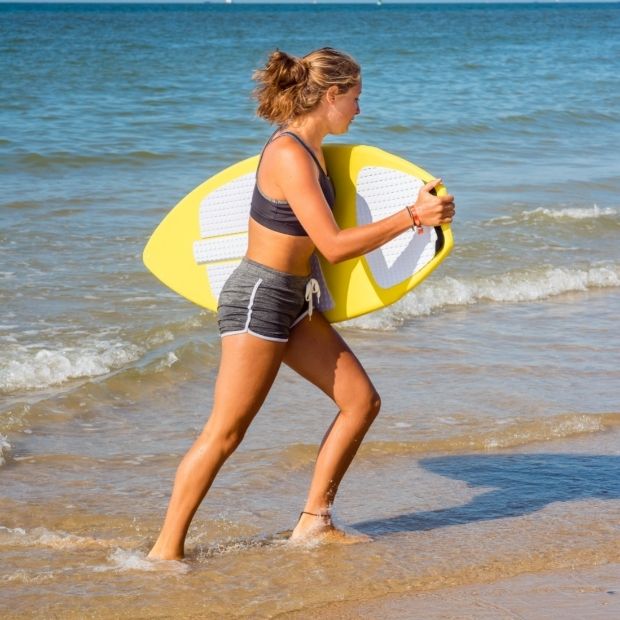
Skimboard traction pads are a good investment as they help provide you with correct foot placement and using them allows you to feel where to place your feet in the right place as you step onto your board.
Using traction pads makes it a lot easier and faster to learn proper foot placement.
While traction pads do cost more than a stick of wax the advantages far outweigh the financial outlay as they will give you a lot more grip on the board.
This means you will have more control over your board as you begin skimming and will be able to maneuver a lot easier.
Using a front arch bar up the center of the board will give you more grip and control.
A skimboard tail pad with a back kicker will allow you to shift your weight back more easily and control your turns.
When stepping onto your skimboard place your back foot over the tail pad and the front foot should be centered over the arch bar in the middle of the board.
You'll still need to wax your skimboard in the areas where there is not traction pad and you also shouldn't put traction pads on a cheap wooden skimboard (the pads will be worth more than the board) .
8. Wax On Wax Off
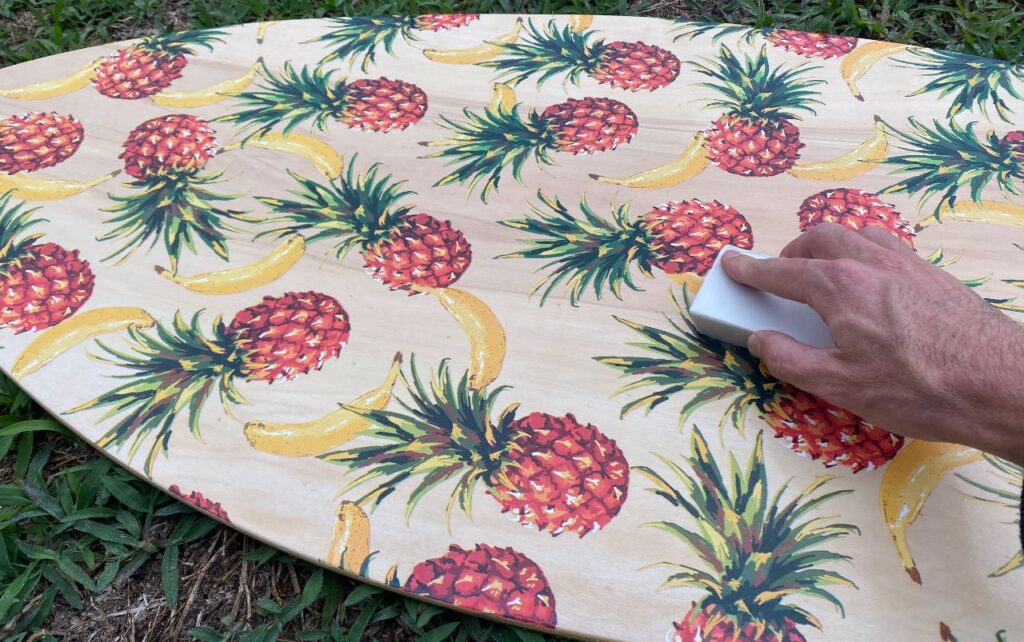
If you are a beginner and not quite ready to outlay the extra money on traction pads you will need some wax for the top of your board to help you stay upright.
It is pretty easy to fall off a wet skimboard so applying surf wax to the top of the board allows you to stick better.
Concentrate on getting a good coating of wax at the back of the board to give purchase for your back foot and down the centerline for your front foot.
Remember to apply the wax to the areas where your feet go.
Click here to learn exactly how to wax your skimboard for the first time
You don't need to rewax a skimboard very often so it should last quite a while for just a couple of bucks. However, if the wax gets too dirty you can scrape it off after leaving the board in the sun and allowing the wax to soften.
9. Add Speed Wax To The Bottom of Your Skimboard
Some people swear by it and other people say it doesn't add much speed but you can add speed wax to the bottom of your skimboard for a bit of an extra boost.
Speed wax is hydrophobic – so it resists water – allowing you to glide over wet sand and over the water slightly faster than a board without speed wax.
You can see my full list of the best speedwax options for skimboards but a lot of people know and use Zum Wax (available at Amazon) which is affordable and easy to use on your skimboard:
See the latest price of ZUMWax at Amazon
10. One-Step Drop (Don’t Throw Your Board In Front Of You and Run After It)
Many beginners sprint down the beach and throw the board in front of them and run after it. I know I certainly did this when I first tried skimboarding.
This is actually the best way to fall over and hurt yourself and you will also lose a lot of energy getting on your board this way.
You'll also lose a lot of momentum which makes it harder for you to make your way out to the waves.
The best way to get onto your skimboard quickly and easily is by learning the one-step drop. This is an essential skill to learn if you want to skimboard waves like the pros do.
Begin by running down the beach and let go of your board when your front foot touches the ground.
Take one step forward and place your back foot onto the rear of the board. Thus the name “one-step drop”
Place your front foot onto the board and lean forward while bending your knees.
Center your balance over the middle of the board.
Check out this article for an easy to follow full explanation of how to perfect the one-step drop or watch the video below:
11. Skimboard Downhill For Extra Speed and Distance
Use gravity to your advantage and find a beach that slopes downhill.
Running downhill into the water will give you extra speed and distance.
It will also save you a heap of energy.
12. Build A Sand Mount
Build a small sand mount at the beach to practice learning spins on dry sand.
This isn't a mount you're running and jumping over with speed. Literally just build a mount and put your board on top of it – much like those balance boards people use at home.
This is a great place to learn how to do a backside shove-it by kicking out your back foot and letting the board spin in a clockwise direction underneath you.
13. Master The Ollie
Master the ollie by pushing down on your back foot while skimming and moving your front foot forward as the nose of your board lifts up.
This can be practiced on the dry sand first but eventually you'll want to move to deeper water.
14. Turn Your Skimboard Sideways To Go Further Out To Waves
Turning your board sideways as you are skimming will allow you to get further and faster out and onto waves. This is called a “side-slip”
With the side-slip your weight is spread evenly over both feet towards the center of the board. This minimizes drag and allows you to skim out further and get onto waves that are farther out.
Check out the video below for more details on how to perfect the side-slip:
15. Have Fun
The most important hack to remember to do while skimboarding is to have fun!
Continually push yourself to be better yes, but keep a great attitude and have fun while doing it.




